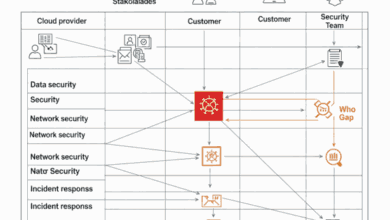What Is Compliance Management?

Compliance management ensures that your company complies with laws, regulations, and internal policies. This includes everything from implementing disciplinary protocols to monitoring and reporting.
With proper compliance, your business could avoid significant legal penalties and fines. Furthermore, you could lose customers and damage your reputation.
It is the process of ensuring that a business complies with laws and regulations.
All companies must adhere to specific laws and regulations covering various topics, including health, safety, finance, and security. Businesses that do not comply with these regulations risk facing fines, regulatory action, and loss of business.
Compliance management ensures that a business complies with all laws and regulations related to its industry. It includes implementing policies, processes, and procedures that help companies to meet legal requirements, avoid penalties and avoid negative publicity.
Compliance management aims to ensure that a company’s systems, employees, and data comply with relevant regulations and industry standards. It also helps a business keep its operations efficient, secure, and profitable.
In some cases, compliance management can be challenging and time-consuming. However, technology solutions have made it possible to automate many compliance tasks, making them more accurate, consistent, and scalable.
One of the most critical aspects of compliance management is training employees on the policies they need to follow. This training can be done through various channels, including webinars, video lectures, and online courses.
Another critical aspect of compliance management is a “speak up” culture within the company. This means that all employees should be encouraged to ask questions or report any anomalies in the company.
A successful compliance management plan needs commitment from all leaders and key decision-makers. It also requires a formalized program to identify vital standards and regulations, conceptualize policies, create controls, and deploy appropriate personnel.
It is the process of ensuring that a business complies with internal policies.
Every organization has a set of internal policies that must be followed. These policies may vary depending on the industry, but they all involve rules and regulations that must be adhered to.
A compliance management system is essential to ensure that your business complies with these internal policies. It will also help you demonstrate compliance with external auditors.
This process will involve many different steps. It includes setting up a compliance management plan, implementing tools and techniques to comply with the policies, and training employees.
Once the processes are in place, it is essential to keep them updated based on new laws and industry standards. This will keep your company in compliance and protect you from potential fines, penalties, and reputational damage.
Your compliance management program will succeed based on sound planning and forethought. It begins with identifying your obligations and completing a risk assessment.
These requirements could include PCI DSS for companies that accept credit cards, HIPAA for healthcare, and Basel II for financial institutions.
If your organization doesn’t have a robust compliance program, it can cost your company money and cause many headaches. It can also be difficult for employees to understand the rules and what they mean. To avoid this, it is essential to break down the basics of compliance management so that you can educate your employees and ensure they follow the rules.
It is the process of ensuring that a business complies with customer complaints.
Ensuring that a business complies with customer complaints is vital to any quality management system. It provides several benefits for businesses, including improving brand image, creating loyal customers, and delivering good customer service.
It is also a requirement of many regulatory agencies, which review and analyze consumer complaints to identify trends, guide enforcement actions, and work to eliminate unfair business practices. Having comprehensive processes, data, and documentation in place to support them will help demonstrate that your company is making a reasonable effort to address any issues with its products or services.
A well-designed compliance program will include training for employees designed to be constantly updated and adapt to new risks and circumstances. Moreover, it should be tailored to each employee’s unique job duties and requirements.
This training should be conducted regularly and evaluated as to whether it is effective. The program should also be aligned with company policies, government guidelines, and industry standards.
Taking the time to listen to customer complaints can give your team insights into your product or service and how to improve it. Complaints can also reveal the root cause of problems. This information can be used to resolve them and avoid them happening in the future.
It is the process of ensuring that a business complies with internal audits.
Ensuring that a business complies with internal audits is crucial to the success of its operations. In addition, it helps management and the board of directors to gain objective assurance that the company’s governance, risk, and compliance (GRC) program functions effectively throughout the enterprise.
It’s also essential for identifying issues that can be corrected before they are discovered in an external audit, reducing the costs and improving the efficiency of operations. This is especially true regarding a company’s financial processes and reporting.
Compliance management is a broad term covering several areas, including maintaining policies and procedures that keep a business in compliance with relevant laws and regulations, organizing employee training sessions, and tracking regulatory changes.
A company’s compliance management process is vital to its overall business strategy and should be aligned with its overall goals. It should be clearly outlined and communicated to employees and third-party contractors or vendors.
It should be a priority for senior management to ensure that the compliance function is well-aligned with the company’s business strategy and goals, as this will make it easier to prioritize the tasks involved and achieve compliance requirements long-term. A strong compliance management strategy will also help senior management and the board to understand the level of effort required to meet the company’s requirements, helping them to adapt and shift their strategies accordingly.




